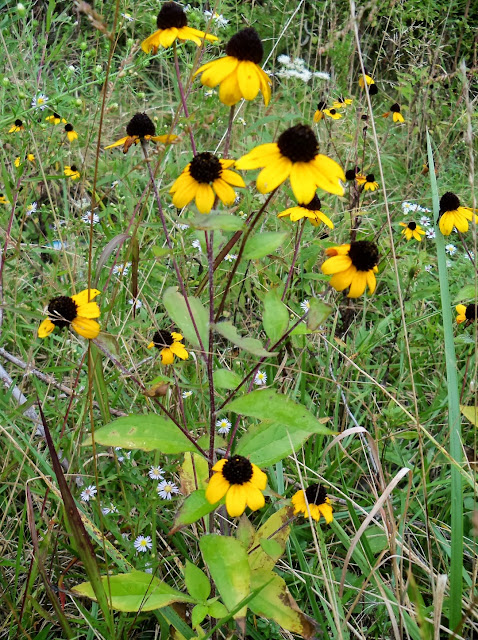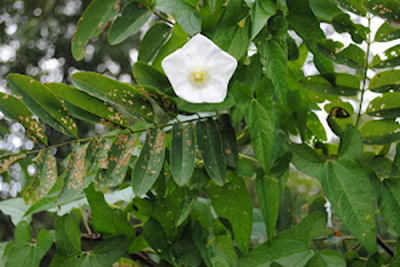September is Ladies Tresses month. I found Ladies Tresses on the farm here several years ago when the fields were allowed to grow longer than normal and were not cut in the fall. Slender Ladies Tresses are first and then Nodding Ladies Tresses. I am posting pictures now of the Slender Ladies Tresses that bloomed the first week in September and now are about gone. And Nodding Ladies Tresses that are just at peak now. They are in the swampy field where I found many other wildflowers that love wet feet. I will continue to post additional photos as they mature.
I just recently read the excellent article by Doug Jolley in the September 2013,
Wonderful West Virginia magazine called
Autumns Orchids, Ladies' Tresses. His article highlight several of the
Ladies Tresses, but it was his description of Yellow Ladies Tresses that caught my attention. I have dry field behind my house that I thought was an unusual place for Nodding Ladies Tresses and now wonder if they could be Yellow Ladies Tresses. I went to look today and they are well over a week behind the Nodding Ladies Tresses, which are at peak bloom. I found only two plants with only one open bloom. So far this fits Yellow Ladies Tresses to a tee; dry feet, later blooming. For now, I will post pictures and wait to pass judgement as they mature.

These Nodding Ladies Tresses were found in a wet field and there seemed to be hundreds of them. This picture shows the small stream with the orchids growing right to the edge. You can see dozens back in the weeds, every white spot is an orchid. I will post more pictures of them soon.
These next pictures are of the Ladies Tresses found in the dry field behind my house. I suspect maybe they are Yellow Ladies Tresses, but will wait till they mature further before I decide. I will take your thoughts as well. So far the evidence is: Dry field, blooming over 1- 1 1/2 weeks later than Nodding Ladies Tresses, unopened blooms do look yellower and they are supposed to be very common in my area.
Possible Yellow Ladies Tresses
 |
| Possible Yellow Ladies Tresses Habitat |
 |
| Close up of flowers |
 |
#296- Jerulsalem Artichoke
I see this flower each year behind my school along the edge of the woods where a drainage ditch runs. I knew that it had blooms similar to Black Eyed Susan but there are a dozen or more blooms floating on hairy, small stems above the plant. It also is just beginning to bloom near the end of September while Black Eyed Susan is about bloomed out. It is not in the popular references despite being a Eastern US native wildflower. This is Brown Eyed Susan and a great looking flower as Fall begins in earnest.
|
Here is another Aster that is different from the others. It has the traits of Showy Aster, but it is not listed as found in West Virginia, so I need to do more research.
300 wildflowers in one year is just in reach but also seems tough to reach this late in the year; so far I have resisted the urge to label many of the similar plants unless I can ID them without question in my mind. There are so many Goldenrods, but I am only comfortable with five yellow ones and a white one. Same with the Asters; New York Aster, Old Field Aster, Small Flowered Aster, Smooth Aster and others are probally among my pictures but I just can't comfortably ID them.
And I think of the missed opportunities; I know where to find White Clintonia and Indian Cucumber Root plants, but could not find them in bloom, but have found both with fruit, one after chasing the grandbabies ball into the edge of a pine thicket. I find a Red
Sessile Trillium and Dwarf Larkspur in Morgantown, but was not there this year. And there were others. But the constant searching here late in the year has shown me many wildflowers that I had not seen before. Its been a great year what ever the end count is.










+(1).JPG)



.JPG)
.JPG)














.JPG)



.JPG)
.JPG)














.JPG)
.JPG)
.JPG)







